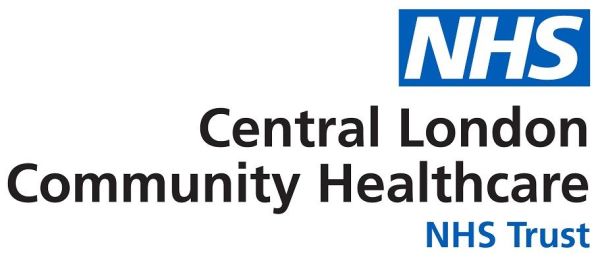A patient story is an individual's personal account of their healthcare experience as described in their own words. At its simplest, it is a conversation with a patient or someone close to them, such as a relative or carer, which is recorded and transcribed.
Patient stories are a continuous improvement tool which help identify areas where we need to improve the quality of services and transform patient and carer experience, through listening and learning from the patient voice.
Patient stories can be positive, negative, or combine elements of both. Through patient stories we capture evidence of the quality of services, share the learning about what was good and what needs to be improved with the clinical teams, who then take forward any improvements identified together.
A patient story is a rich source of feedback because it provides a detailed account of what the patient experienced at different points of their healthcare journey.
Unlike patient surveys, patient stories are collected face-to-face with the patient and therefore provide an opportunity to ask for more information or clarity where needed about what the patient experienced, to help to identify where improvements can be made.
Because a patient story captures the patient's experiences from their point of view, it helps put ourselves in the patient's shoes and enable us to focus on what matters most to the patient.
The idea is to gain an understanding of the healthcare experience of the storyteller. Collectively, stories can help us build a picture of what it is like to be a service user.
Patient stories are shared anonymously in the following ways where the patient gives appropriate consent:
- With staff at team meetings as part of the patient story process.
- As part of an annual thematic analysis of patient stories received every year.
- With patients and members of the public through Trust communications, e.g. newsletters, our website, annual Quality Account and our Annual General meeting.
- With our commissioners and other external stakeholders
- At the start of every Board meeting, Quality Relationship Stakeholder Group and Patient Experience Group meetings.
As part of the patient story process, every member of staff who collects a patient story is required to complete an analysis of the key themes in terms of both positive and negative feedback, to identify any shared learning points and to draft an action plan.
The anonymised patient story, key themes and action plan are then presented to the wider clinical team, and any actions to be taken forward agreed together.
Due to the current circumstances, we are not currently collecting face to face patient stories. You can still get in contact to arrange a virtual collection of your story.
If you would like to tell us the story of your experiences with our healthcare services, please contact us either by contacting our PALS team by emailing clchpals@nhs.net or by calling the team on 0800 368 0412.
All patient stories are anonymised (i.e. you will not be identified at any point), and you will be asked to sign a consent form beforehand to agree where your story can be shared, for example:
- With our staff inside the organisation (minimum level of consent required)
- With people outside the organisation (e.g. with our commissioners, our Board, other patients and members of the public)
You can withdraw your consent at any stage of the process for any reason.
Once you are happy to tell your story, a member of our staff will arrange to meet you at a mutually convenient date and time to hear your story. This conversation will be recorded on a dictaphone to allow it to be easily transcribed and then the recording will be permanently deleted. The anonymised patient story transcript will not be placed on your medical record and will be stored securely as feedback by our Patient Experience Team.
Patient stories can be captured directly onto film where the patient consents to being identified and to their story being shared outside the organisation on our website and social media channels. Video stories can be powerful tools when services are thinking about service improvements.
Some recent examples:
https://www.youtube.com/watch?v=0NHeFDWLMbQ&feature=youtu.be
https://www.youtube.com/watch?v=FYnl062tz7M&feature=youtu.be
https://www.youtube.com/watch?v=4yC82SIb5BM&feature=youtu.be
https://www.youtube.com/watch?v=0NHeFDWLMbQ&feature=youtu.be
https://www.youtube.com/watch?v=FYnl062tz7M&feature=youtu.be
https://www.youtube.com/watch?v=XPJSM3Ex08Q
'Dynamic Patient Stories' is a project aimed at improving the accessibility of the patient stories process for patients with learning disabilities, younger patients, patients with speech and language impediments and End of Life patients or their relatives or carers.
The project also aims to empower patients to take greater ownership of their story by communicating it through creative means, such as video, storyboard, photography or captioned collage.
- An example of this is Henrietta's video story, which captures the moving tale of a lady who moved to London from the Caribbean in the 60s, and who used Pembridge Palliative Care Unit's day care services
- An example of dynamic photo story is "R’s” story, which captures the experiences of a young woman with learning disabilities and physical disabilities who provided her feedback on an exercise programme delivered to her by Health Improvement Services at a community gym in Paddington.
In a series of three short films created to help train staff on the power of patient stories to drive improvements, staff member, Laura Cook, Therapies Lead on Marjory Warren Ward, at Finchley Memorial Hospital describes her experience of collecting a patient story from a patient undergoing Inpatient Rehabilitation.
- In the first film, Laura talks about how she approached collecting a patient story:
Film 1: Preparing to do a patient story
- In the second film Laura talks about how she approached theming the patient story:
Film 2: Theming and analysing a patient story
- In the third film, you can hear Laura explain what actions were taken in response to Frank’s patient's story:
Film 3: Action plan and next steps
In response to this patient story, we created a 'You said, we did' poster capturing the actions taken. You can download this case study in a printable format.

